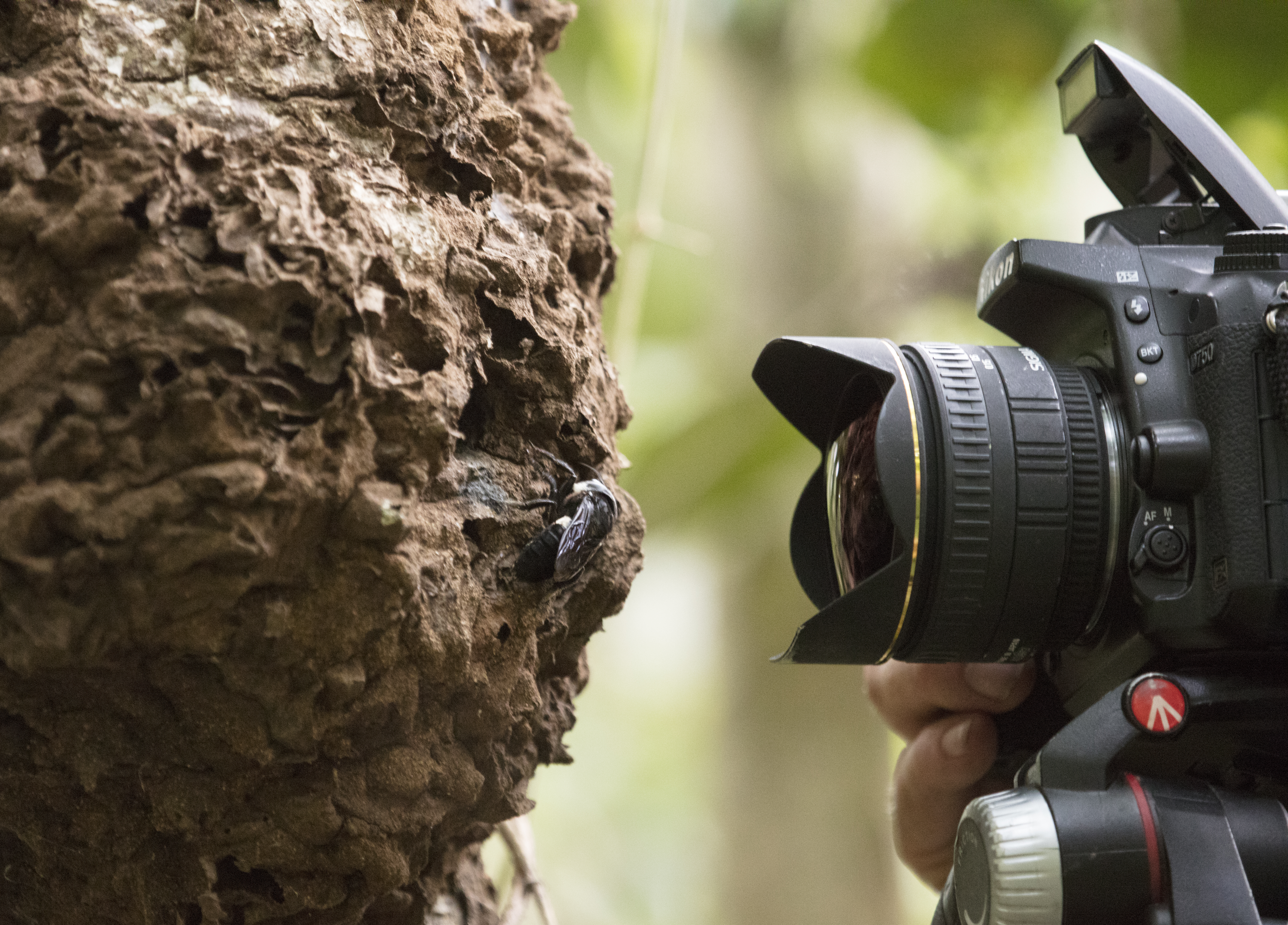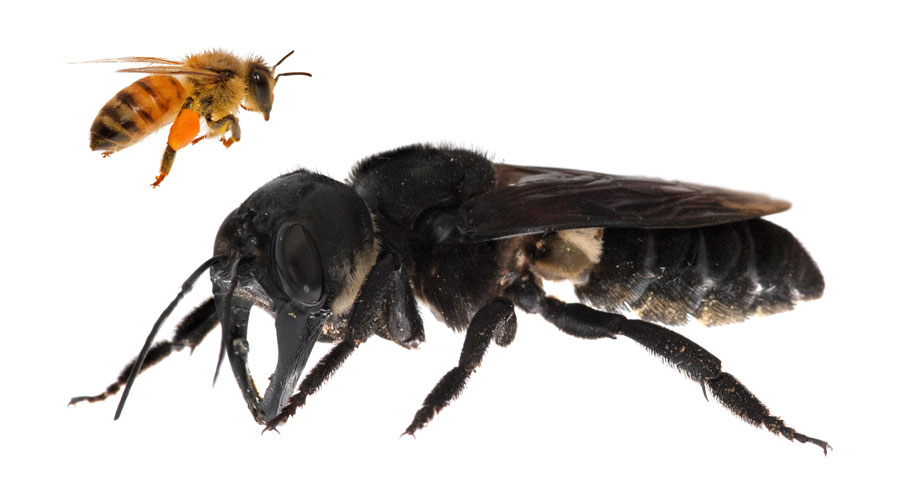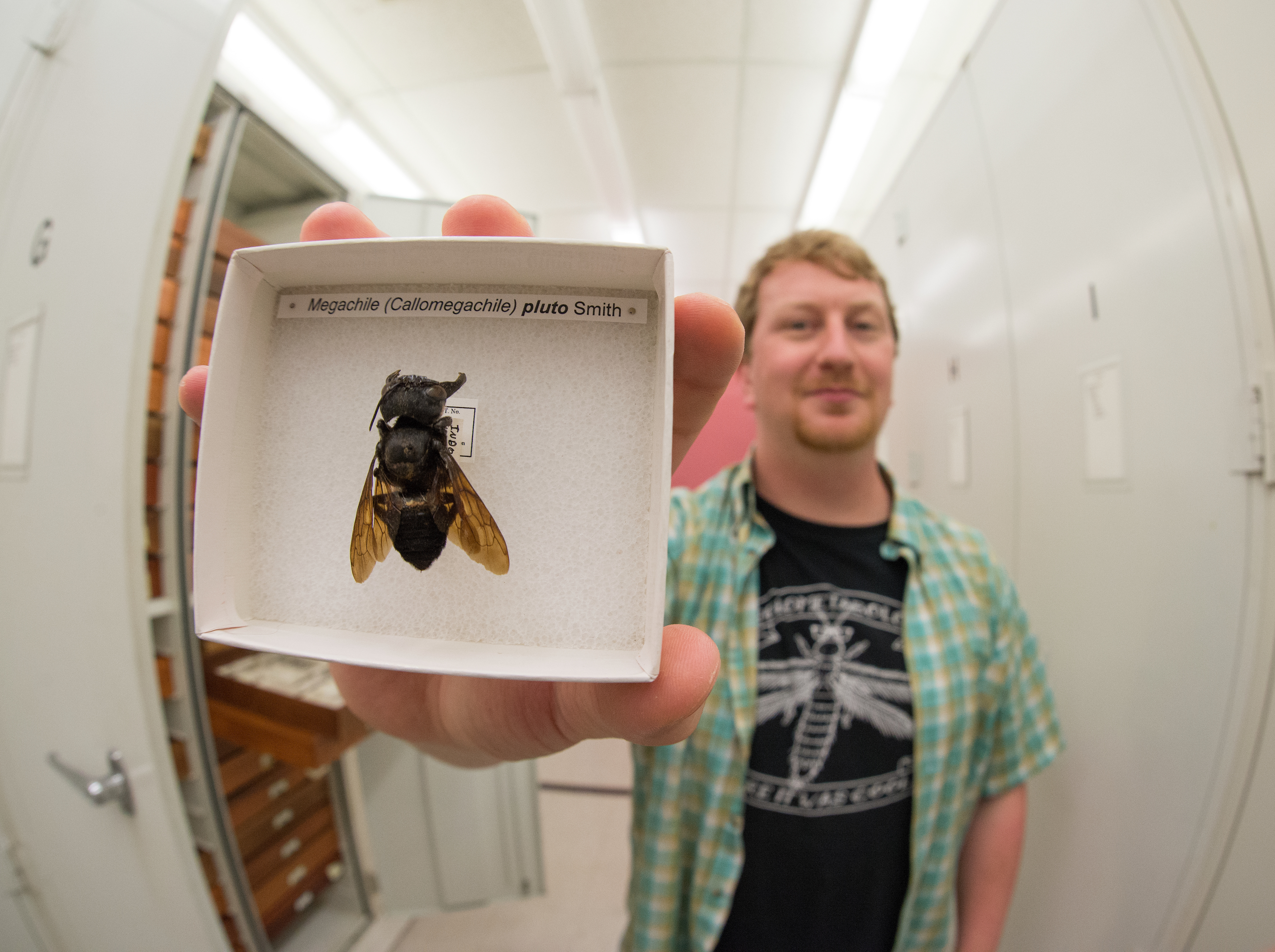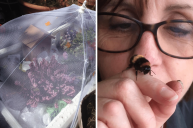A team of researchers and conservationists found and recorded the world's largest bee, thought by some to be lost forever.
News recently broke out of the scientific community that the Wallace's giant bee has been rediscovered in Indonesia. Known in insect circles as the "holy grail" of bee discoveries, the species was feared extinct after decades of non-existence in documented scientific research.
The Wallace's giant bee (Megachile pluto) is the world's largest, with a wingspan of more than 2.5 inches. It was located in the North Moluccas Islands. It wasn't until the last of a five-day stop in one articular area that the single female specimen was found, photographed, and filmed for the first time.
The bee's body is comparable to the size of a normal adult thumb. Prior to the rediscovery, no one had seen a Wallace's giant bee since 1981.

Simon Robson
"It was absolutely breathtaking to see this 'flying bulldog' of an insect that we weren't sure existed anymore," said nature and natural history photographer Clay Bolt, who took the first photos and video of the species alive.
Wallace's giant bees make their homes in active termite nests built in trees.
It was found by a team from around the globe, including Honorary Professor Simon Robson from the University of Sydney, Honorary Professor Dr. Glen Chilton from Saint Mary's University in Canada, Eli Wyman from Princeton University, and Bolt, the conservation photographer, who is from Montana.
"Amid such a well-documented global decline in insect diversity it's wonderful to discover that this iconic species is still hanging on," Professor Robson said about the find.
Named after English entomologist Alfred Russel Wallace, who was one of Darwin's cohorts in the natural selection discovery, Wallace's giant bee was first found on the Indonesian island of Bacan. Wallace first described the female bee as "a large black wasp-like insect, with immense jaws like a stag-beetle."
Luckily for the world's largest bee, it's no longer a lost species, and work is already being done to work for more and devise conservation plans for their longevity.
NEXT: PRAYING MANTIS DISCOVERED FISHING, A FIRST SEEN IN THE WILD
WATCH





